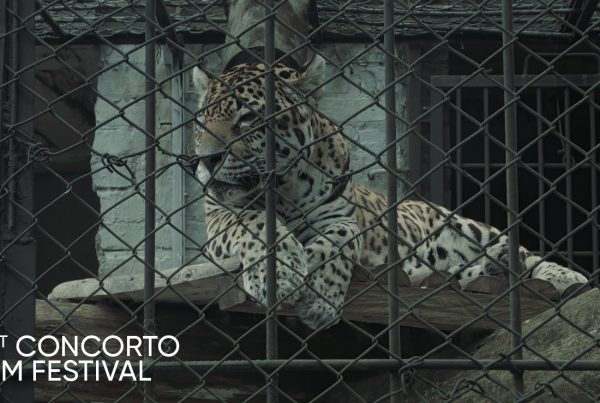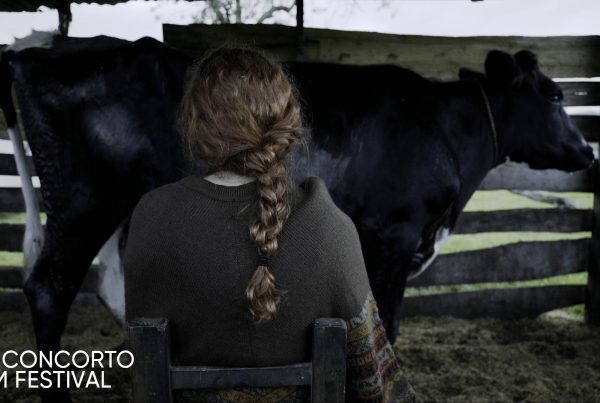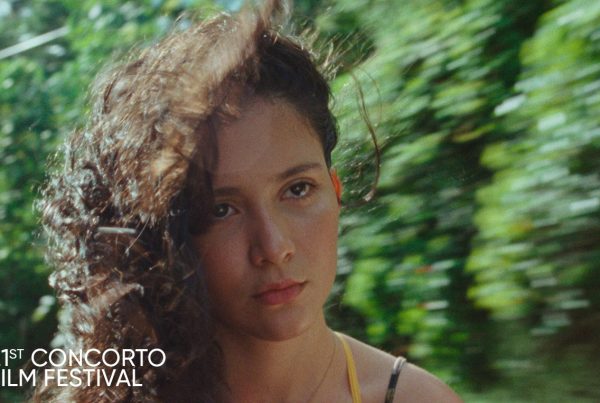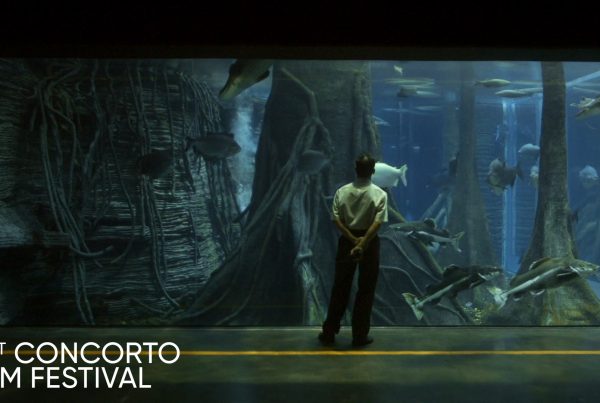curated by Simone Bardoni in collaboration with Bogoshorts
Focus Colombia – BOGOSHORTS world tour
Always interested in exploring and spreading the minor and less known cinematic arts, during the years in Concorto geographical focuses have been dedicated to tens of european and international countries, with a special look to Europe and the closest productions and at the same time the less known to the general public. But this year it has been decided to expand the research and come out from the European continent, returning to deal with South America. After Cuba and Argentina, the territorial focus of the twentieth edition will be dedicated to Colombia. In the last few years Colombian film productions of high substance, visual research and compelling contents characterized by a strong emotional charge, have multiplied. Colombian films have become among the most interesting in the contemporary scene, both for the freshness of visions dedicated to contemporary and for stylistic innovations in fiction, animation and documentary field. As the cinema of many other countries in the south of the world, Colombian cinema has also grown exponentially in the past twenty years. To give an idea of the entity of this phenomenon, from 1993 to 2000 no more than four films in a year were released, in other words less than the 2% of the films shown in theaters along the national territory; in 2012 the Colombian titles were 23, in 2017 were 44. Naturally the growth was not just quantitative; in the last decade many films have been produced which have been able to capture, through the prism of violence in all its form, the more or less recent history of the country. There are many titles which are worthy of a mention, such as La tierra y la sombra by César Augusto Acevedo, award winning in 2015 of the Caméra d’Or for the best first feature at the Cannes film festival, about the tragedy of a peasant family victim of exploitation, or the latest Frío en la montaña by Edison Gómez Amaya, just presented at the 8° Festival internacional de cine por los derechos humanos, that encloses in a chamber drama the story of a military conflict which has marked the country over the last sixty years. A social cinema, intimate and universal at one time, which, both in feature and short films, reflects about the facets of a complicated and ever-changing country. The focus Colombia in Concorto 2022 will bring these visions during the week of the festival with double screening appointments.
The selected shorts
by Simone Bardoni
Dora sena, Jorge Caballero Ramos, 2020
Entelequia, Daniel Ochoa Colombie, 2021
Entre tu y Milagros, Mariana Saffon, 2020
(Sin Asunto), Guillermo Moncayo, 2021
Todo es culpa de la sal, María Cristina Pérez 2020
Zarzal, Sebastián Valencia, 2022
Zarzal – as seen by Francesca Marchesini
Missing people, massacres and weapons: this is the stereotype that tv series and films have taught us to associate to Colombia staging boody shooting and fights between drug cartels. The short film by Sebastián Valencia does not break this bond between the country and the crime, however it depicts through the eyes of a father and a son which are living their daily life; we have full consciousness of the environment experienced by the characters, without the artwork being caricatured. First of all Colombia by Zarzal is road trips, pool games and slushes at the park… but the disappearance of a certain Morocho and the murder of a family cannot but fuel the story with a significant tension.
Sin Asunto – as seen by Francesca Marchesini
Guillermo Montecayo wants to break the cycle of transgenerational trauma, searching in his past for strength to appeal to the future. A voice suggests an idea for a film script: a zookeeper resumes the relationship with his daughter after a car accident. In real life the children are two, the car accident did not actually caused a head trauma and the girl involved is the director’s sister. The short film turns into a therapy and, through the story, the main character tries to put aside his longing felt for others (and by others) so that he can face fatherhood without implanting in his son the same trauma resulting from a family psychological pattern.
Entelequia – as seen by Francesca Marchesini
A farmer tries to face his life as if nothing had happened after have committed a grisly murder. No investigation, no research for the culprit, no explanation of what happened. The scene is pervaded by a strong religious dimension: the Catholic ceremony of Via Crucis, the sacrifice of Jesus Christ for mankind…can we consider this murder an act of devotion? Or, maybe, a rite of atonement for some other sin unknown by the audience? In the short film by Daniel Ochoa the milky-white purity turns black while images of a rural and spiritually charged existence flow silently in the background.
Dora Sena – as seen by Francesca Marchesini
In an article from 1965, Italo Calvino described the emergence of anti-language which excluded the facility and the expressive depth in the light of “bureaucratisation” of meaning. Using an extremely technical language, so far by the one spoken, is not a problem which involves just Italian, but it is sure that in many fields, as the legal one, the “linguistic professionalization” creates a significant detachment between insiders and population. Jorge Caballero invented “Dora Sena”, an artificial intelligence system able to formulate legislative proposals for the Colombian Parliament in order to accelerate approval’s time of the regulations during the pandemic and make them more understandable. Through the computerization of the legislative process, Caballero highlights even more the artificiality of this sociolinguistic setting.; the contrast between a robotic narrator and then the images without the physical presence of man suggest a strong sense of alienation: how to exercise control over a situation of total abandonment?
Entre tu y Milagros – as seen by Margherita Fontana
Entre tu y Milagros is a touching portrait of a mother-daughter relationship and how it changes over time, at the onset of adolescence. Milagros is a fifteen-year-old girl, still very attached to her mother, her only parental reference figure. Then, one summer, an unexpected encounter with death will shake their relationship and her very existence. Presented in Venice, in the Horizons section, Mariana Saffron’s Colombian short film stems from the director’s reflection on her relationship with her mother and the emergence of her person that replaces the flatness of her role. The action takes place against the backdrop of the Colombian social context, traversed by harmful dynamics and inequalities now pervasive to the point of being invisible.
Todo es culpa de la sal – as seen by Vanessa Mangiavacca
The blame is on the salt, on a misplaced object, on a minor wrong choice, on too much frustration, on repressed anger, on unspoken words. The short film of the young Colombian director María Cristina Pérez is a 2D animation, made up of paintings, thick and dense brushstrokes that portray a family of sloths. Animations portraying anthropomorphic characters are nothing new, especially not at Concorto, yet this is the first time we see the animal that is the symbol of slowness as such: the process of estrangement becomes stronger and the burden of melancholy grows bigger. Sloths always spend their lives in trees and this is one of the many secrets that has saved them from extinction: however, in Todo es culpa de la sal they come down to earth and embody the emotional, economic, and social problems of living in a human world. A delicate and intimate family tale, a first-person narrative told by the eldest daughter, a narrative that can capture an unhappy mother and a distracted and absent father: it is a very likely portrait of any ordinary family.














Commenti recenti